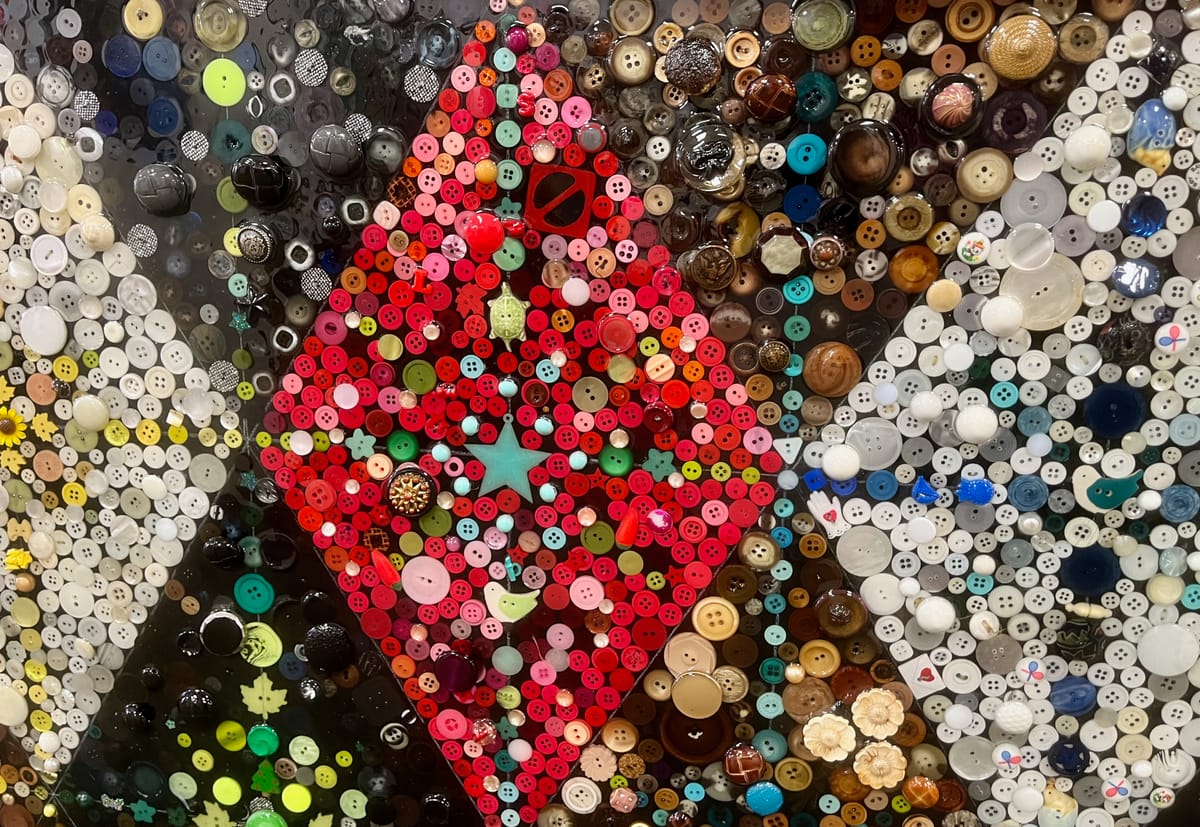What is ‘percent for art?’ About the public art funding program that Wichita arts advocates don’t want to lose
Local arts leaders sounded the alarm after comments from Mayor Lily Wu during last Tuesday’s Wichita City Council meeting. The Council will vote to adopt the proposed 2025 city budget tomorrow.
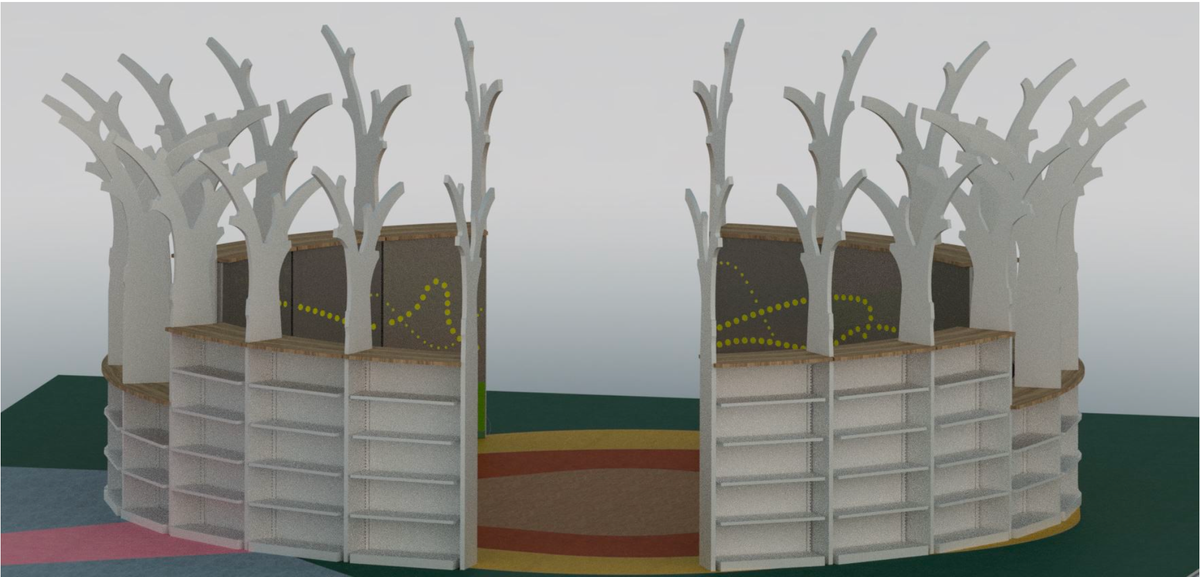
An exchange during last week’s Wichita City Council meeting has prompted some Wichita arts advocates to speak out in favor of a relatively new and little-understood public art funding program.
During public comment on the 2025 Annual Operating Budget and 2025-2034 Capital Improvement Program, District 2 resident Faith Martin suggested temporarily suspending the city’s percent-for-art ordinance to make up for an expected 2026 budget shortfall.
“Maybe we look at amending that public code when we have a shortfall,” she said. “Not that I am against the arts. … I love supporting our local art community. But when we look at what the core services are, we may have to walk that back until we can get ourselves to where we have a little more budget.”
In the discussion that followed Martin’s comments, Mayor Lily Wu asked about if “there were opportunities to … scale back” planned spending on public art.
City Manager Robert Layton said the council would have to vote to repeal the 2019 ordinance in order to adjust the allocation of public art dollars. (In a Thursday interview with the Wichita Eagle, Wu said she was not interested in cutting public art funding.)
Sign up for Sign up for Where the Art Is, our free monthly email newsletter
Stay in the know about Wichita's arts and culture scene with our event calendar and news roundup.
No spam. Unsubscribe anytime.
How percent for art passed in Wichita
In 2019, the Council approved an ordinance that allocated 2% of public project funds to public art projects, including related costs, such as ongoing maintenance of the city’s public art collection. That calculation will result in more than $1.7 million in spending on public art dollars in 2025, if the current budget proposal is approved in tomorrow’s city council meeting. That's less than one quarter of one percent of the city’s proposed budget, or roughly $10 per household.
With the percent-for-art funding in place, the city plans to devote more than $17 million to public art over the next 10 years.
Wichita’s is one of more than 350 percent for art programs managed by municipalities across the country. In last week’s Council meeting, Layton said he began having conversations about the possibility of implementing a similar ordinance as early as 2009. According to a 2019 Wichita Eagle article about efforts to pass the ordinance, the idea was also floated in 1999.
You may be familiar with recent additions to the City of Wichita’s public art collection at Riverfront Stadium, Wichita Public Library locations, and at Chester I. Lewis Park Reflection Square Park in downtown Wichita — all funded prior to the passage of the percent for art ordinance.
“The City has implemented public art for 20 years in an ad hoc fashion,” reads a slide presentation prepared by the city manager’s office and presented to the City Council in December 2019. “The ordinance amendments would codify a public art process and establish a funding source.”
Pre-ordinance, the process for funding public art was like the “Wild West,” said Elizabeth Stevenson, who has served as an art consultant to the city in the past, including on the Riverfront Stadium project. She was also one of a 10-member committee led by former Wichita Art Museum Director Patricia McDonnell that worked to implement percent-for-art funding in Wichita. (The other members of the committee were Jeff Best, Connie Bonfy, Sharon Fearey, Arlen Hamilton, Martha Linsner, Phil Meyer, Ty Tabing, and Kent Williams.)
“Nobody knew what was going on (before the ordinance passed),” Stevenson said. “A project might get funding for public art, it might not. The Design Council didn’t have a formal role in the process. There was no system to adjudicate public art. It was a case-by-case basis.”
Under the new ordinance, public-arts funding is tied directly to public improvement projects, the application process is open and accessible, and artists and art consultants are involved at the beginning of each public improvement project. The Design Council — an advisory body appointed by the mayor — recommends where the dollars should be spent, and the City Council approves those allocations.
One of the first projects to receive funding under the new program is the renovation of the Westlink Library, funds for which were approved by the City Council in September 2022. The library will reopen to the public early next year.
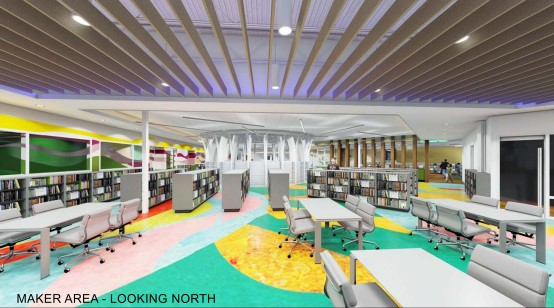

Renderings of the Westlink Library renovation, which included multiple art components, including flooring inspired by Kansas wildflowers by Margaret Sullivan Studio and a tree-like “teen pod” designed by Wichita artist Stephen Atwood. The renovation is one of the first projects funded by Wichita's percent for art ordinance, which passed in 2019. Images courtesy of the Wichita Public Library
Arts leaders encourage advocacy
After the August 13 council meeting, Kristin Beal, the executive director of Harvester Arts, circulated a letter urging people to contact their representatives in City Hall. If the city cuts funding for public art, she says she worries Wichita will lose artists, which will have a wider impact on the community.
“It feels like we're finally making strides to build a creative ecosystem here where artists can live and work here as artists,” she said. “If cuts are made, we will lose ground and lose artists. The arts attract and retain talent, and beyond artists, companies look to communities that have a strong arts ecosystem, because they know that their employees want that.”
Stevenson echoes that sentiment. Cutting public arts funding contributes to “brain drain,” she said.
Other arts leaders who have spoken out in favor of maintaining public art funding include Sonia Greteman and Ann Garvey.
“Studies show that investments in public art can improve safety, provide tourism, attract business, add jobs and keep artists employed in our city,” Sonia Greteman said in a Facebook post shared by her agency the Greteman Group.
Garvey, who also asked her contacts to reach out to their elected city leaders, cited the Americans for the Arts study released this spring that estimates Wichita’s nonprofit arts sector generated some $185 million to the local economy in 2022, up from an estimated $49 million in 2005. District 2 City Council Member Becky Tuttle, who spoke in favor of public arts spending at the August 13 meeting, also referenced the study in her comments.
But the arts have impact beyond the economy, Garvey noted.
“There are endless studies affirming art’s effect on mental, emotional and physical health,” she said.
Beal said that she understands that the city is facing huge budget shortfalls, but the arts shouldn’t be the first funding category to question.
“(Art is) more than jewelry,” Beal said. “It really contributes so much to the local economy, to community identity, to social impact.”
For more information:
- Notes on the August 13, 2024, City Council meeting on Documenters.org
- The August 13, 2024, Wichita City Council meeting on YouTube
- No more ugly buildings: proposal would require major city projects to include artists (Wichita Eagle, March 2019)
- Full text of the ‘percent for art’ ordinance
- 2025-26 proposed City of Wichita budget and 2025-2034 proposed Capital Improvement Program
- City of Wichita Arts and Economic Prosperity study
- City of Wichita Cultural Arts strategic plan
Emily Christensen is a freelance journalist and news entrepreneur based in Wichita, Kansas. She is a co-founder of the SHOUT.
Jacinda Hall (she/her) is a journalist born and raised in Wichita, Kansas. She is currently a senior at Wichita State studying journalism and English. She has been on staff at the Sunflower for the past two and a half years, most recently as the publication's podcast editor for the 2023-24 academic year. Outside of writing, Hall enjoys knitting, crocheting, playing video games, watching TV and listening to a good book or podcast.
Teri Mott is a writer and actor in Wichita, Kansas, where she has covered the arts as a critic and feature writer and worked at nonprofit arts organizations for 40 years. She is a co-founder of the SHOUT.
More from the SHOUT
 The SHOUTAnne Welsbacher
The SHOUTAnne Welsbacher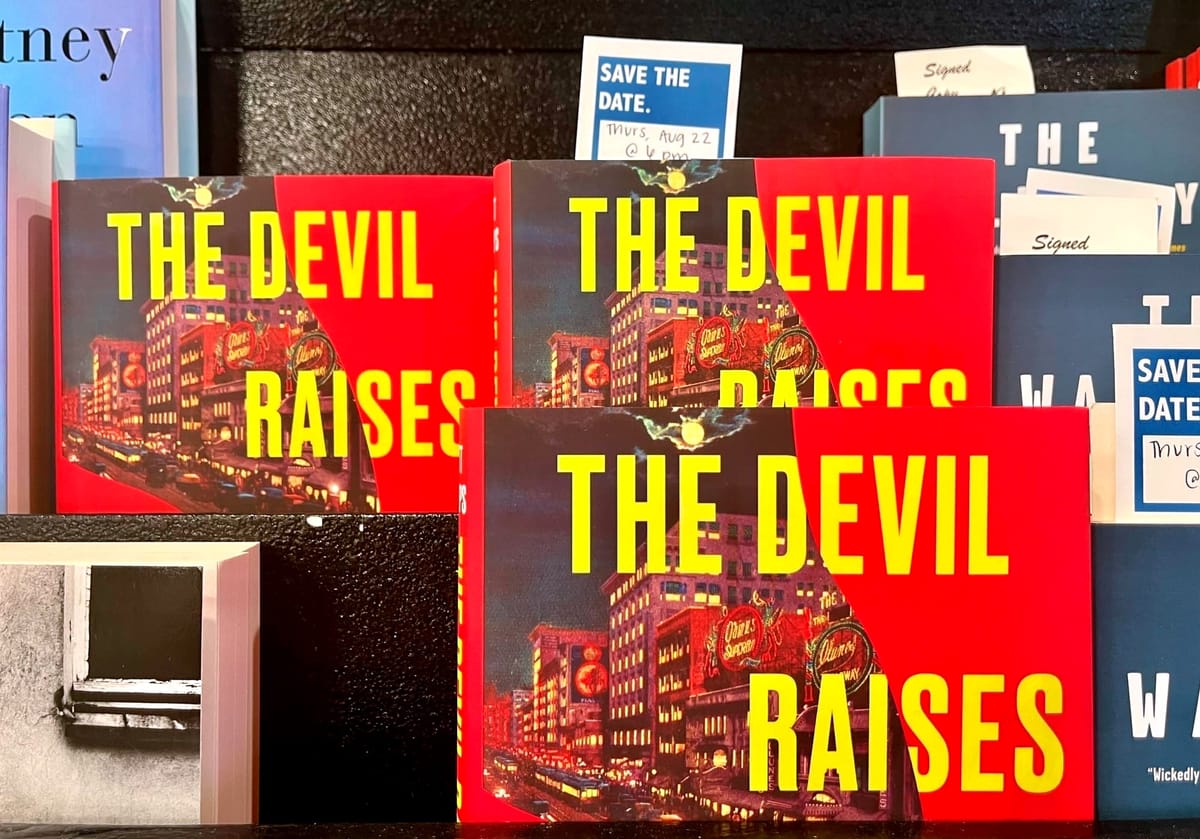
 The SHOUTTeri Mott
The SHOUTTeri Mott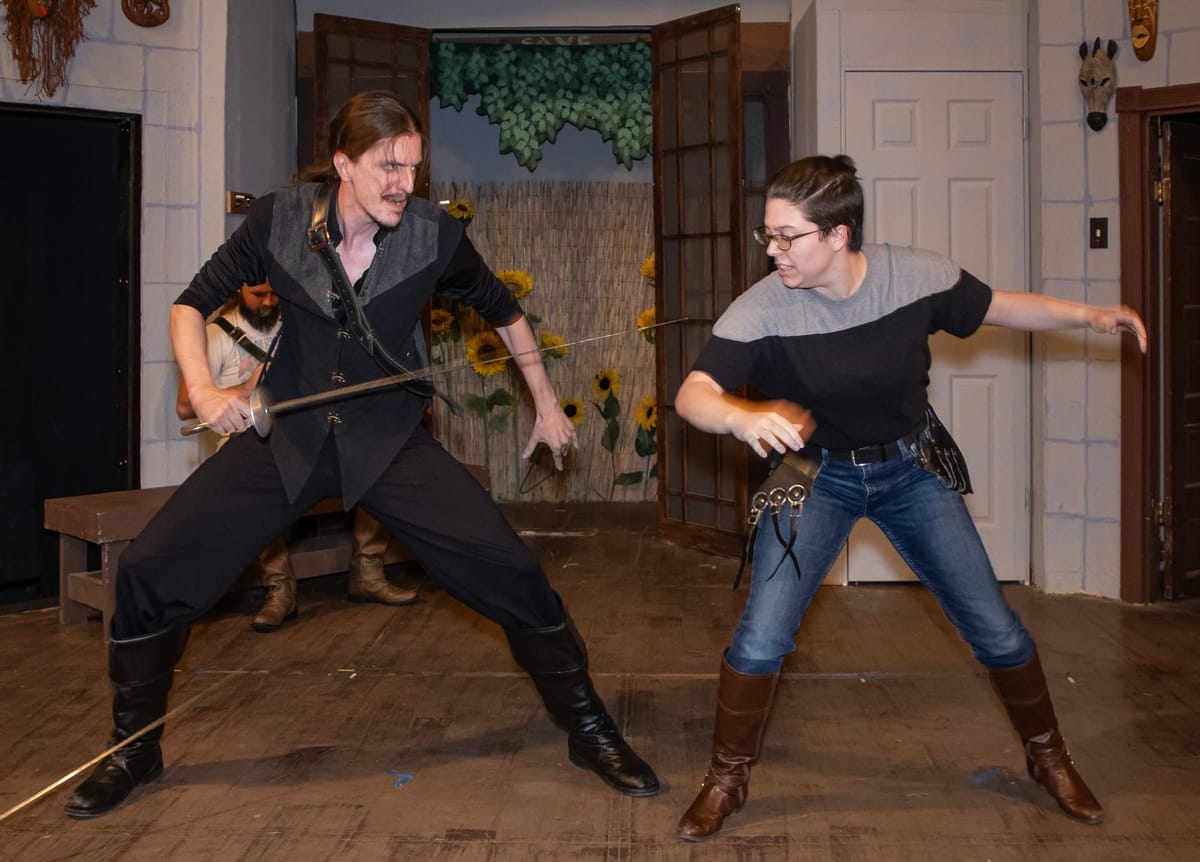
 The SHOUTJacinda Hall
The SHOUTJacinda Hall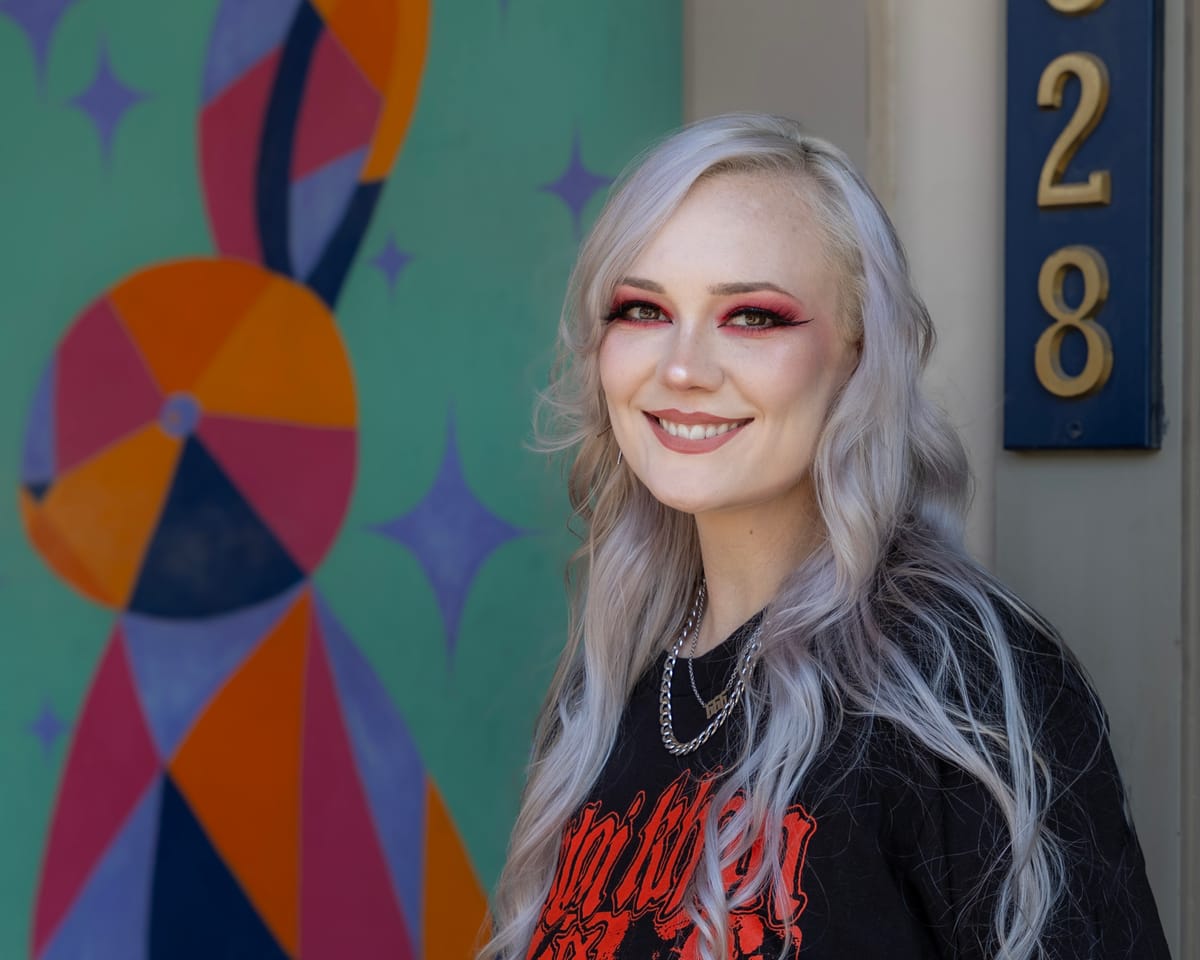
 The SHOUTBeth Janssen
The SHOUTBeth Janssen